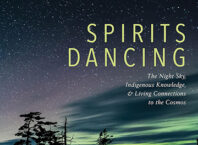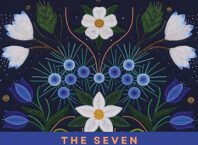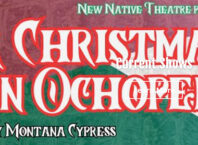Arvel Bird – The Tribal Music Suite
Journey of a Paiute
There are several notable precedents in the field of classical composition. Hietor Villa-Lobos (1887-1959), Carlos Chavez (b. 1899), George F. Bristow (1825-1895), John Knowles Paine (1839-1906), George W. Chadwick (1854-1931) and Arthur Farwell (1872-1952) who wrote many pieces based on Native American material.
Some Native American composers such as G.T. Strong (1856-1948) and Arthur Bird (1856-1923) actually emigrated to Germany because they were interested in recognition for their work from somewhere beyond the Rhine. Edward McDowell (1861-1908) is reputed to have been the best composer of his generation.
Tribal Music Suite chronicles the life of Quaninch, a mixed-blood boy born in 1829 to a Paiute mother and Scottish frontiersman and fiddler. Shortly after Quaninch’s birth, his father leaves for California to bring back horses but never returns. Quaninch’s journey continues through his capture by slave traders, his conscription into the Mexican Army as the Mexican-American War of 1846 erupts, his escape, love, sorrows, journey across the ocean and triumphant return to his Paiute people.
In “Birth and Tribal Life” the CD begins with a chord that recalls a blowing wind. A bright, excellently played piece that covers both the traditional flute and violin, covering material that contains elements of the connection between the Irish and the Native communities.
These are the thematic references to the Celtic connection that he will mention in more detail later in the piece.
In track two, “Slavery and Conscription” we see that the titles to these pieces are more than just words. They are a concise portrayal of the actual events and the music takes the listener on a journey that all people can follow.
In the documentary “We Shall Remain”, Carter Camp says, “There is a time in every tribes history of absolute horror. Absolute horror. If you go back to the beginning for some of the eastern tribes that was 500 years ago. Ours (Lakota and Wounded Knee) was in the 1890’s and we haven’t forgotten.”
In the track “Music – The Common Ground” the Kalimba backs a flute with a string arrangement. Not synthesizer, actual strings. Trap set drums, bass and other percussion set this one apart. No matter who invents something or who establishes the tradition, it will all always fit if you perceive it to fit.
I perceive that there are no real distinctions or separations, but the school of thought that comes from the western European scientific notion that everything needs to be categorized in order for all to understand is false. What matters is the spirituality of it all.
The composition “Celtic Connection” reminds me I have always enjoyed the connection with our Celtic brothers. It starts with a solid vocal intro featuring the violin next to it over something that sounds like a traditional Scottish or Irish folk tune.
The song “The Journey Home” compels me to ask why someone would risk the dangers of an ocean and an entire continent to get back to the land of their birth?
This is the point. It is about what we know and love and the bond that exists between the blood and the land. It is in the drum and the human voice. I hear it. I feel it. It can never be any different. It is the history of that place and the dust of my ancestors that make this land what it is for me. This piece summarizes everything about the composer’s notions about identity and connection.
We do have common ground in every sense of the word. It only becomes difficult when we don’t share that with others. The album ends as it started – with the song of the wind, drum and rattle – with the drone of existence going on.
Although Mr. Bird falls short on the balance that an educated listener w
ants to hear, (My brilliant and talented musical consultant, Steve K. aka tep, states most emphatically that, “the symphony is an afterthought and the traditional elements of the piece dominate.”), personally I never would have noticed if he hadn’t pointed that out.
The thing that dominates my thoughts is a noticeable lack of any vibrato in the violin technique being presented. Is that an intellectual position taken by Mr. Bird to portray the difference in the two traditions? It is, in a way, a rejection of the western tradition inasmuch as that can be understood coming from the place he comes from.
For more info: www.arvelbird.com, or www.deerstarproductions.com Jamison Mahto: Reporter/Indigenous In The News, Indigenous In Music CD Review
jamison@iicoc.com • www.iicoc.com






